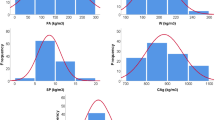Abstract
The quality of cast products in green sand moulds is largely influenced by the mould properties, such as green compression strength, permeability, hardness and others, which depend on the input (process) parameters (that is, grain fineness number, percentage of clay, percentage of water and number of strokes). This paper presents multi-objective optimization of green sand mould system using evolutionary algorithms, such as genetic algorithm (GA) and particle swarm optimization (PSO). In this study, non-linear regression equations developed between the control factors (process parameters) and responses like green compression strength, permeability, hardness and bulk density have been considered for optimization utilizing GA and PSO. As the green sand mould system contains four objectives, an attempt is being made to form a single objective, after considering all the four individual objectives, to obtain a compromise solution, which satisfies all the four objectives. The results of this study show a good agreement with the experimental results.
Similar content being viewed by others
References
Marek CT (1966) Green sand permeability—its significance and control. AFS Trans 74:70–81
Frost J, Hiller JM (1966) The mechanics of green sand moulding. AFS Trans 74:177–186
Wenninger EC (1968) Green sand processing: an introduction to current fundamental thinking. AFS Trans 76:101–111
Dhindaw KB, Chakraborty M (1974) Study and control of properties and behavior of different sand systems by application of statistical design of experiments. In: Proceedings of the 41st international foundry congress, pp 9–14
Casalino G, De Filippis LAC, Ludovico A (2005) A technical note on the mathematical and physical characterization of selective laser sintered sand for rapid casting. J Mater Process Technol 166:1–8
Parappagoudar MB, Pratihar DK, Datta GL (2007) Linear and non-linear statistical modeling of green sand mould system. Int J Cast Met Res 20(1):1–13
Parappagoudar MB, Pratihar DK, Datta GL (2007) Non-linear modeling using central composite design to predict green sand mould properties. Proc IMechE B J Eng Manufacture 221:881–894
Sushil kumar, Satsangi PS, Prajapati DR (2010) Optimization of green sand casting process parameters of a foundry by using Taguchi method. Int J Adv Manuf Tech. doi: 10.1007/s00170-010-3029-0
Rosenberg RS (1967) Simulation of genetic populations with biochemical properties. Ph.D. thesis, University of Michigan
Lee TS, Ting TO, Lin YJ (2007) An investigation of grinding process optimization via evolutionary algorithms. In: Proceedings of the 2007 IEEE swarm intelligence symposium
Sardinas RQ, Santana MR, Brindis EA (2006) Genetic algorithm-based multi-objective optimization of cutting parameters in turning process. Eng Appl Artif Intell 19:127–133
Datta R, Majumder A (2010) Optimization of turning process parameters using multi-objective evolutionary algorithms. In: Proceedings of the IEEE congress on evolutionary computation, Barcelona, pp 1–6
Ali-Tavoli M, Nariman-Zadeh N, Khakhali A, Mehran M (2006) Multi-objective optimization of abrasive flow machining process using polynomial neural networks and genetic algorithms. Machining Sci Technol 10(4):491–510
Kuriakose S, Shanmugam MS (2005) Multi-objective optimization of wire-electro discharge machining process by non-dominated sorting genetic algorithm. J Mater Process Technol 170:133–141
Hong X, Yuan Li, Kaifu Z, Jianfeng Y, Zhenxing L, Jianbin S (2010) Multi-objective optimization method for automatic drilling and riveting sequence planning. Chin J Aeronaut 23:734–742
Rao RV, Pawar PJ, Shankar R (2008) Multi-objective optimization of electrochemical machining process parameters using a particle swarm optimization. Proc IMechE B J Eng Manufacture 222:949–958
Kumar CA, Nair NK (2010) “Multi-objective PID controller based on adaptive weighted PSO with application to steam temperature control in boilers”. Int J Eng Sci Technol 2(7):3179–3184
Hu X, Eberhart RC, Shi Y (2003) Engineering optimization with particle swarm. In: Proceedings of the IEEE swarm intelligence symposium 2003 (SIS 2003), Indianapolis, Indiana, USA, pp. 243–246
Raquel C, Naval P (2005) An effective use of crowding distance in multiobjective particle swarm optimization. In: Proceedings of the 2005 conference on genetic and evolutionary computation, Washington DC, USA, pp 257–264
Author information
Authors and Affiliations
Corresponding author
Rights and permissions
About this article
Cite this article
Surekha, B., Kaushik, L.K., Panduy, A.K. et al. Multi-objective optimization of green sand mould system using evolutionary algorithms. Int J Adv Manuf Technol 58, 9–17 (2012). https://doi.org/10.1007/s00170-011-3365-8
Received:
Accepted:
Published:
Issue Date:
DOI: https://doi.org/10.1007/s00170-011-3365-8




